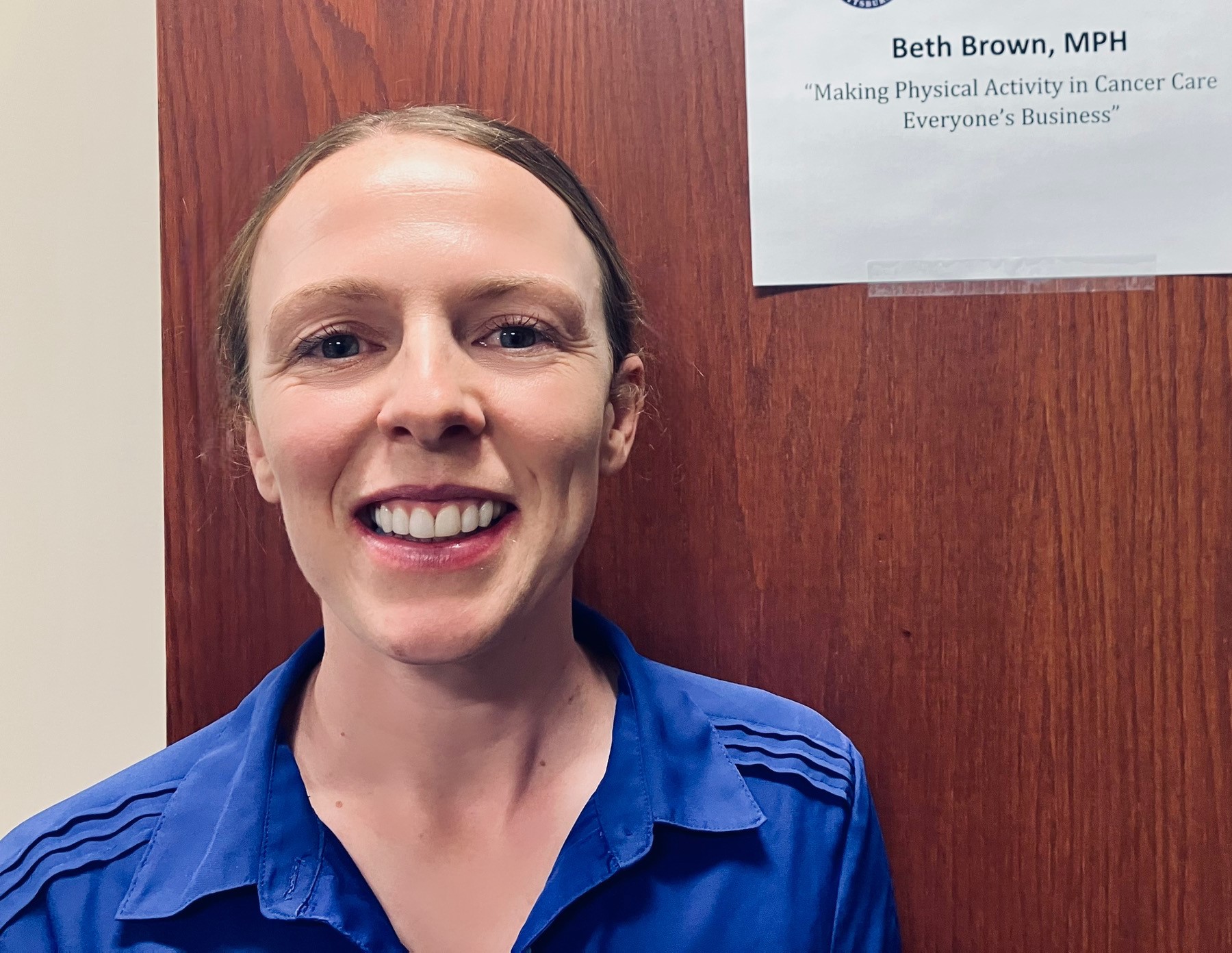Beth Brown, MPH |
Feb.
2, 2024

Evidence shows that physical activity is highly beneficial for people living with and beyond cancer and is one of the most effective ways to manage the side effects of treatment and improve quality of life1. Despite this, physical activity support is not routinely available within cancer care and most people diagnosed with cancer are not meeting the recommended levels of physical activity. This challenge has been recognized globally, leading to the establishment of the American College of Sports Medicine’s (ACSM) Moving Through Cancer initiative, with a mission to integrate exercise as standard practice in oncology by 20292. During the tenure of my Churchill Fellowship, I investigated exemplar exercise oncology programs in North America to gain insights into the cultural and contextual factors that have contributed to successful implementation. Exploring international perspectives can help us to overcome common barriers and make progress towards making physical activity ‘business as usual’ worldwide.
I hypothesized that the U.S. and UK’s differing healthcare models would influence the availability of funding and thus the culture of embedding physical activity into clinical care. However, I learned that how programs are funded had very little impact on their success, and the extent to which physical activity was normalised by the design of clinical environments and processes was far more influential. Design features can significantly affect people’s perceptions and behaviors. Health professionals are more likely to talk about physical activity and refer patients to support programs if it feels like a normal part of their work. Equally, patients will be more receptive to the conversation and adhere to the physical activity support if it feels like a normal part of their cancer treatment.
In some exemplar programs in the U.S., exercise facilities have been strategically placed next to a hospital reception and in close proximity to chemotherapy wards. This intentional design allows for a powerful message to be conveyed to all those who enter the hospital - that in the midst of cancer treatment, it is possible and encouraged to stay physically active. By being visible and easily accessible during treatment, the facilities also serve as regular prompts for both patients and clinicians to incorporate physical activity into their routine. This reduces stigma and creates the perception that exercise is an essential part of cancer care. In contrast, many exercise programs in the UK are delivered in community gyms without any visible connection to healthcare. This separation leads to the misconception that exercise is optional or only for those who are interested. Although there are advantages to offering physical activity support outside of hospital settings and closer to people’s homes, when a visual prompt for physical activity is provided within a clinical environment, it increases the likelihood that individuals will utilize these opportunities, even if they are not located within that facility. Successful programs recognize that the needs of people living with cancer can vary greatly and offer a range of options, including clinical exercise interventions, self-management advice, and community signposting. They also acknowledge that the success of any program relies on uptake and adherence by patients. Thus, it is crucial that the importance of physical activity is emphasized throughout the design of the clinical pathway to enable more people to access various forms of support.
In the physical activity sector, we often use the ambition of programs becoming funded by healthcare systems as a marker of success, and the importance of normalising physical activity through design features is often overlooked. Of course, funding is essential to deliver programs, but the most successful interventions had sustained the program for several decades without funding from healthcare systems. In some cases, funding from the system was viewed as a disadvantage due to its volatility, and using charitable and commercial funds instead allowed awareness and trust to be grown over a longer period of time. In these examples, the healthcare systems had still committed to the program by providing space within a hospital. As healthcare space is a premium commodity, this provision creates the perception that physical activity is prioritized by the organization, further re-enforcing its importance. In contrast, if a health organization supports a programme purely through funding, the support is unlikely to create a normalizing effect, as clinicians and patients aren’t usually aware of how the programs are funded.
As we continue to advocate for physical activity to become part of standard care worldwide, the importance of making physical activity look and feel part of normal cancer treatment cannot be forgotten. Building new hospitals to accommodate exercise facilities is not feasible everywhere; nevertheless, there are simple and cost-effective design modifications that everyone working in cancer care could implement. For millions of people living with and beyond cancer, the benefits of physical activity could be truly life changing, and in some cases, lifesaving.
Whether you are a clinician, exercise professional, or researcher working with cancer patients, ask yourself, how can we work together to create a culture where physical activity is ‘business as usual’?

Beth Brown, MPH. As the Operations Manager of the National Centre for Sport & Exercise Medicine in Sheffield, England, Beth brings over 10 years of experience developing physical activity interventions for chronic health conditions. In her current role, she is responsible for overseeing a co-location model that aims to transform the way physical activity is integrated into the National Health Service. In recognition of her expertise and dedication to this field, Beth was awarded with a Churchill Fellowship in 2020. This fellowship funded her travels across North America, where she was able to explore and learn about the latest innovations and best practices for incorporating physical activity into cancer care.
References
1. Patel, A. V., Friedenreich, C. M., Moore, S. C., Hayes, S. C., Silver, J. K., Campbell, K. L., ... & Matthews, C. E. (2019). American College of Sports Medicine roundtable report on physical activity, sedentary behavior, and cancer prevention and control. Medicine and science in sports and exercise, 51(11), 2391.
2. Schmitz, K. H., Stout, N. L., Maitin‐Shepard, M., Campbell, A., Schwartz, A. L., Grimmett, C., ... & Sokolof, J. M. (2021). Moving through cancer: Setting the agenda to make exercise standard in oncology practice.
Cancer,
127(3), 476-484.